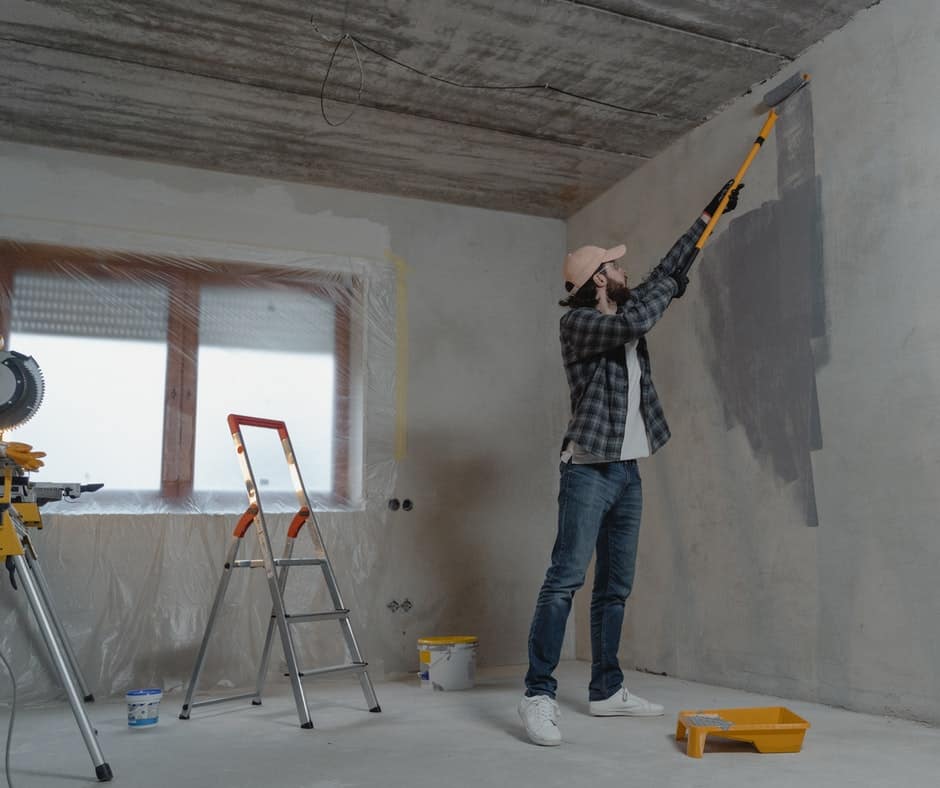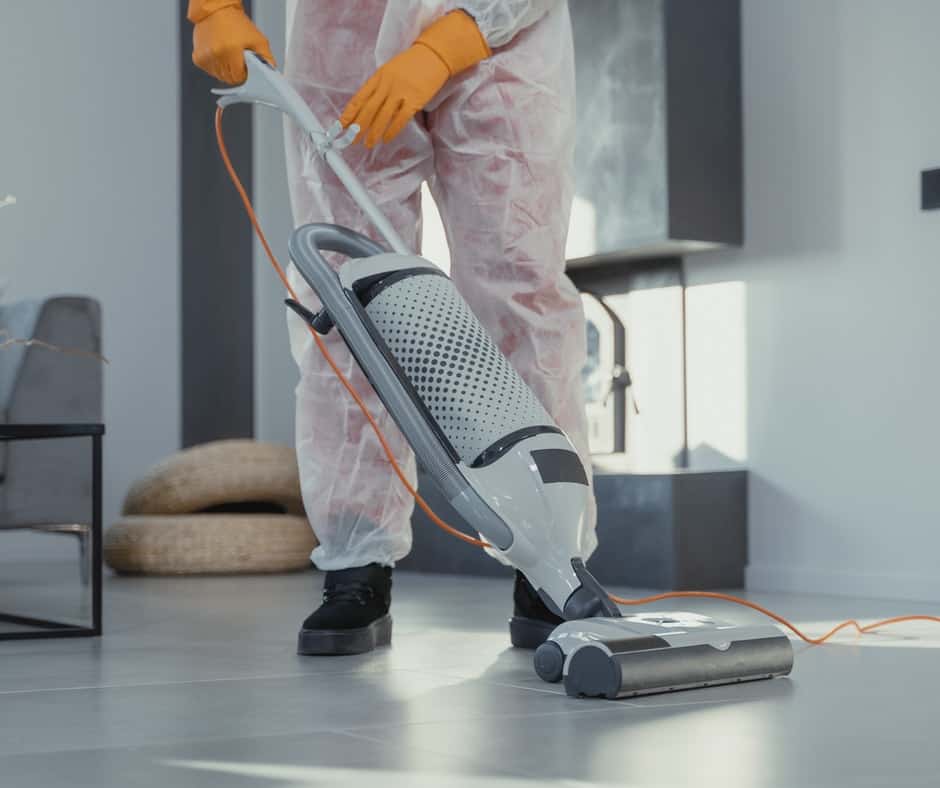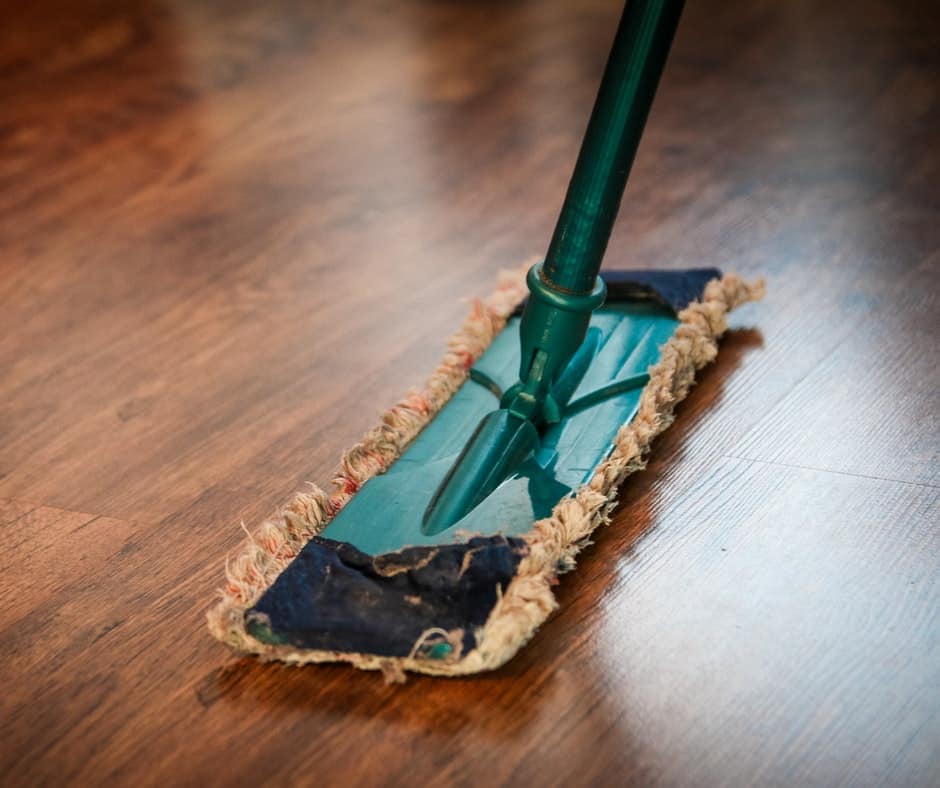Cement is a useful, fast way to repair holes or cracks in your concrete floor or foundation. In addition to being strong, it’s also fairly easy to work with. And, it’s an ingredient in concrete.
But, it can also crumble and create dust. Its dust is a fine white powder that you’ll probably see on floors that regularly get traffic. While the dust isn’t an immediate threat to your health, if you breathe it in over long periods of time, it can affect your health.
Knowing how cement dust is created is a good step towards avoiding those issues. You should also know how to properly clean it up when you see it. We’ll share some information for both.
In This Article We'll Discuss
6 Reasons for Cement Dust in Your House and How to Clean It
When working with cement, some amount of dust is normal since cement and concrete both break down. But, some things can speed up the process and cause the formation of cement dust. For example:
1. Inadequate ventilation can allow carbon dioxide to build up. This weakens the cement at the surface and allows it to turn to dust.
2. Too much water used during the mixing process will cause a weaker bond to form, allowing for more rapid decay.
3. Allowing concrete or cement to freeze before the curing process is complete will cause the water to expand. This will create a weaker bond.
4. In high humidity, water will condense on concrete. If you trowel it before it’s completely cured, the water condensed on the concrete will get pushed to the surface of the concrete. That will create a weaker bond at the surface that will easily turn to dust.
5. Part of the concrete curing process requires the water to seep through the layer directly beneath the concrete. If the layer under the concrete won’t allow water to penetrate it, the water will remain in the concrete.
6. The cement that’s used at the surface of the concrete to speed up the curing process is weaker than concrete. So, it will crumble more quickly.
What Causes Cement Dust in a House?
Cement dust is a common household problem. Cement is used either to patch holes and cracks, or it’s used to make concrete. Both cement and concrete will eventually break down, but concrete will take much longer.
When that happens, the concrete or cement will crumble or break down into a fine, white, chalky dust. It consists of tiny silica particles that make up one component of most types of cement.

In addition to normal wear and tear, remodeling projects are a common source of cement dust in your home. You might notice it settling on the floor for a couple of weeks after you finish remodeling.
In addition, the presence of water around drying concrete can create a weaker bond at the surface. Then, when that’s scraped and scuffed by normal foot traffic, it can result in cement dust.
Excess water is usually the result of using too much water when mixing up cement or concrete. But it has other causes. In humid environments, water will condense on concrete. If a concrete floor hasn’t fully cured, condensation can seep into the surface and weaken its bonds.
An important way to cure concrete is to allow gravity to pull water down out of it. If there’s a solid layer under a concrete floor, water will remain in the floor and weaken it. That will allow normal wear to produce cement dust.
How Do You Clean Cement Dust?
When it comes to cleaning up cement dust, you have options. You can either use a damp method or a dry method, depending on how much dust you have and where it is.
One important thing is to keep safety in mind. Make sure you wear an N-95 or a similar protective mask so you don’t breathe in dust particles. These particles are linked to a wide range of chronic health problems.

The easiest way to clean up concrete dust is to start by vacuuming up as much as you can. Use a vacuum with a HEPA filter attached to preserve good air quality. You’ll get most of the concrete dust this way, but you’ll still want to get the rest.
Then, you can spray the area with some kind of liquid cleaner. A mild detergent, hydrogen peroxide, or a solution of vinegar works well. These will bind with the particles and make them easier to wipe up with a rag or cleaning cloth.
However, if the area you’re cleaning is big, you might want to stick with a dry cleaning method. This will allow you to cover a lot of space in a short amount of time.
There are commercially available dusting cloths available that work great for picking up particulates like cement dust. Some of them come with long handles so that you can effectively dust the floor as if you’re vacuuming or mopping it.

You can also use tea towels. These are soft and pull up small particles of dust and dirt easily. So, they’ll work on cement dust.
If you’re in a basement or garage, you can always skip all this and just spray the surface down with a garden hose. Just make sure that you push the cement dust into one area where you can easily clean it up when you’re done.
Conclusion
Everything breaks down eventually. When that happens to cement and concrete, a fine, white dust is produced. That process can get sped up by the presence of excess moisture or poor drainage conditions.
That dust can cause a range of human health problems, from various cancers to heart and lung problems. So, it’s best to avoid it if possible. That means knowing how to keep it from building up, and how to clean it up when you see it.
Hopefully, you feel a little more confident in your knowledge of both. We hope the information in this article helps you stay safe in your home. Feel free to share it on your social media networks or leave a comment down below.

